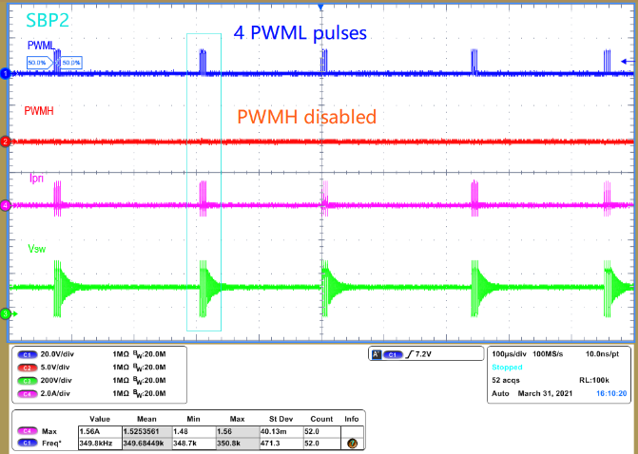SLUAAF9 September 2021 UCC28782
- Trademarks
- 1 Initial Board Visual Inspection and Start-up Check
- 2 Typical System Operating Waveforms
- 3Typical System Protection Waveforms
- 4Common Issues and Solutions
- 5References
2.1 SBP2 Mode
At no load or very light load, PWMH is disabled and there are four PWML pulses in each burst packet. The peak current of each pulse is programmable through the resistance from IPC pin to ground. See Figure 2-1.
 Figure 2-1 SBP2 Mode Operation
Waveform
Figure 2-1 SBP2 Mode Operation
Waveform